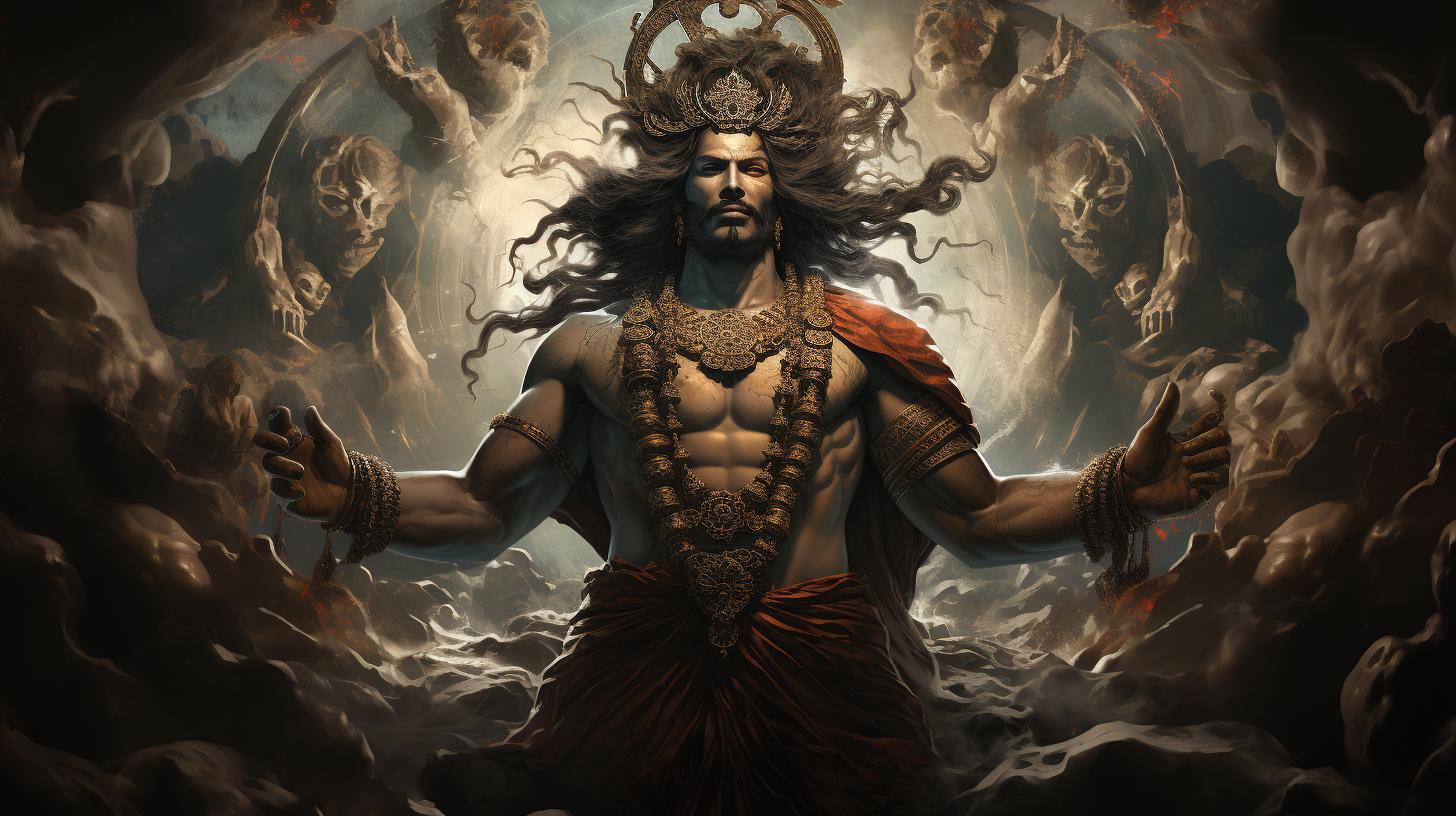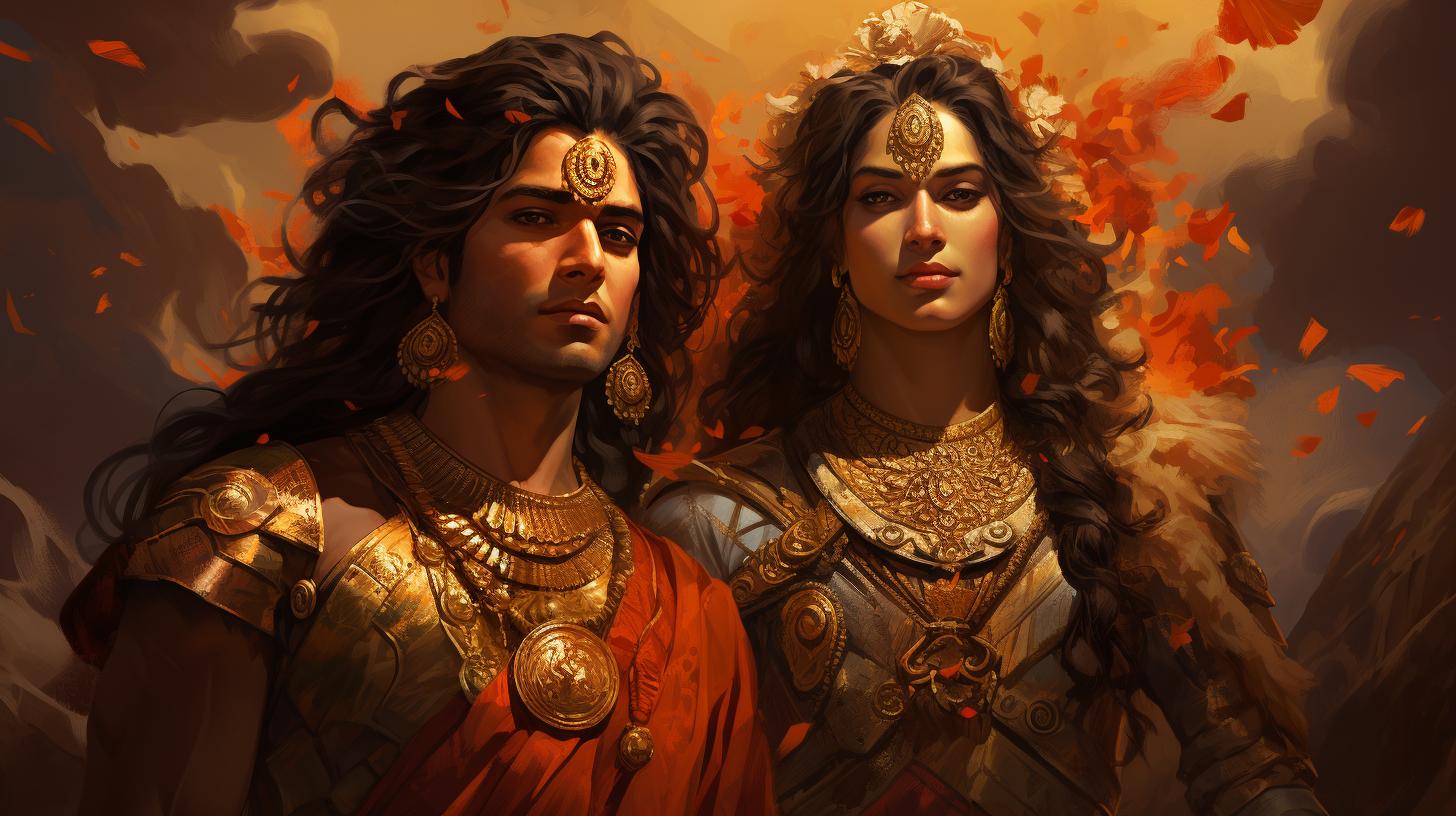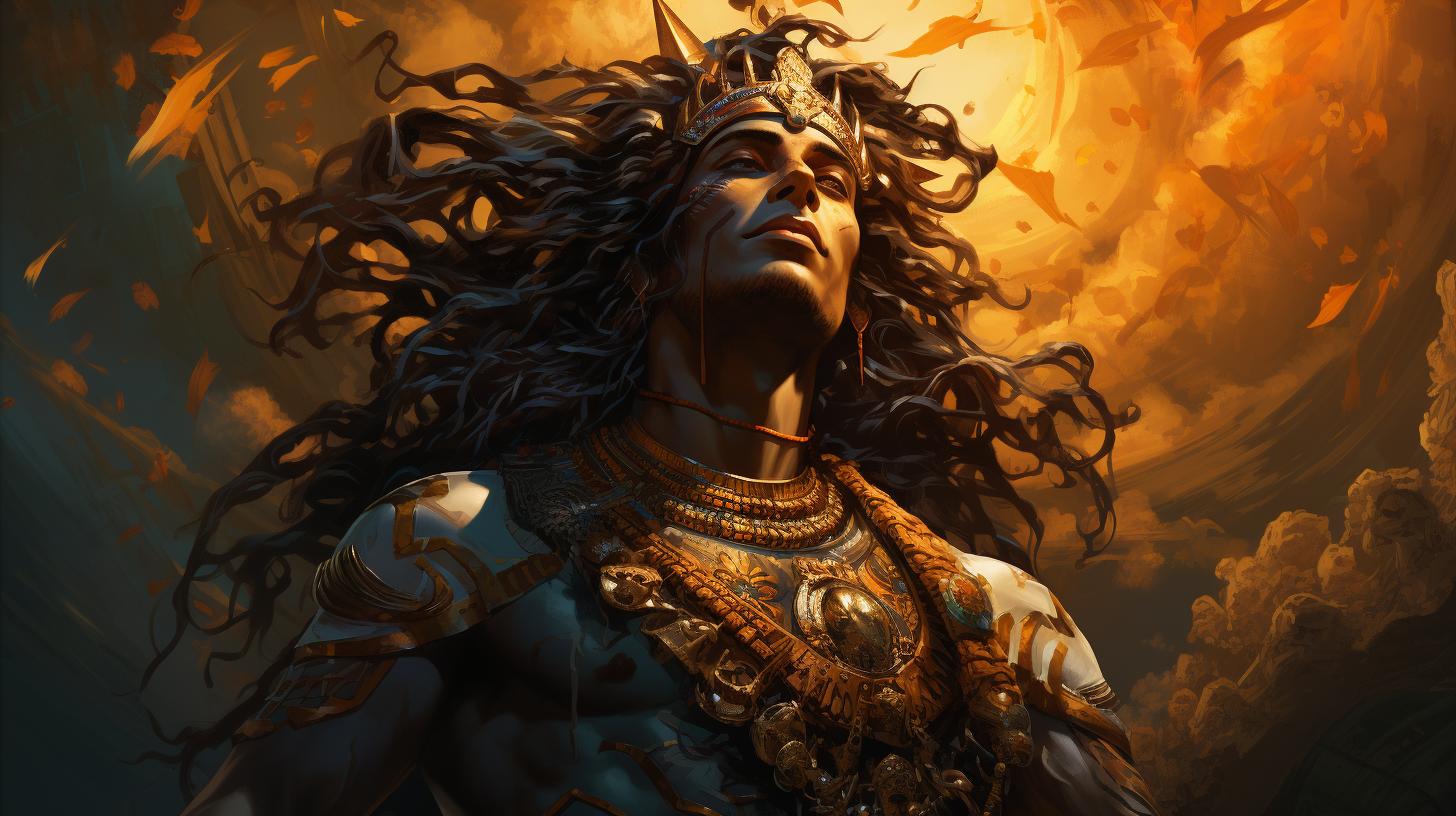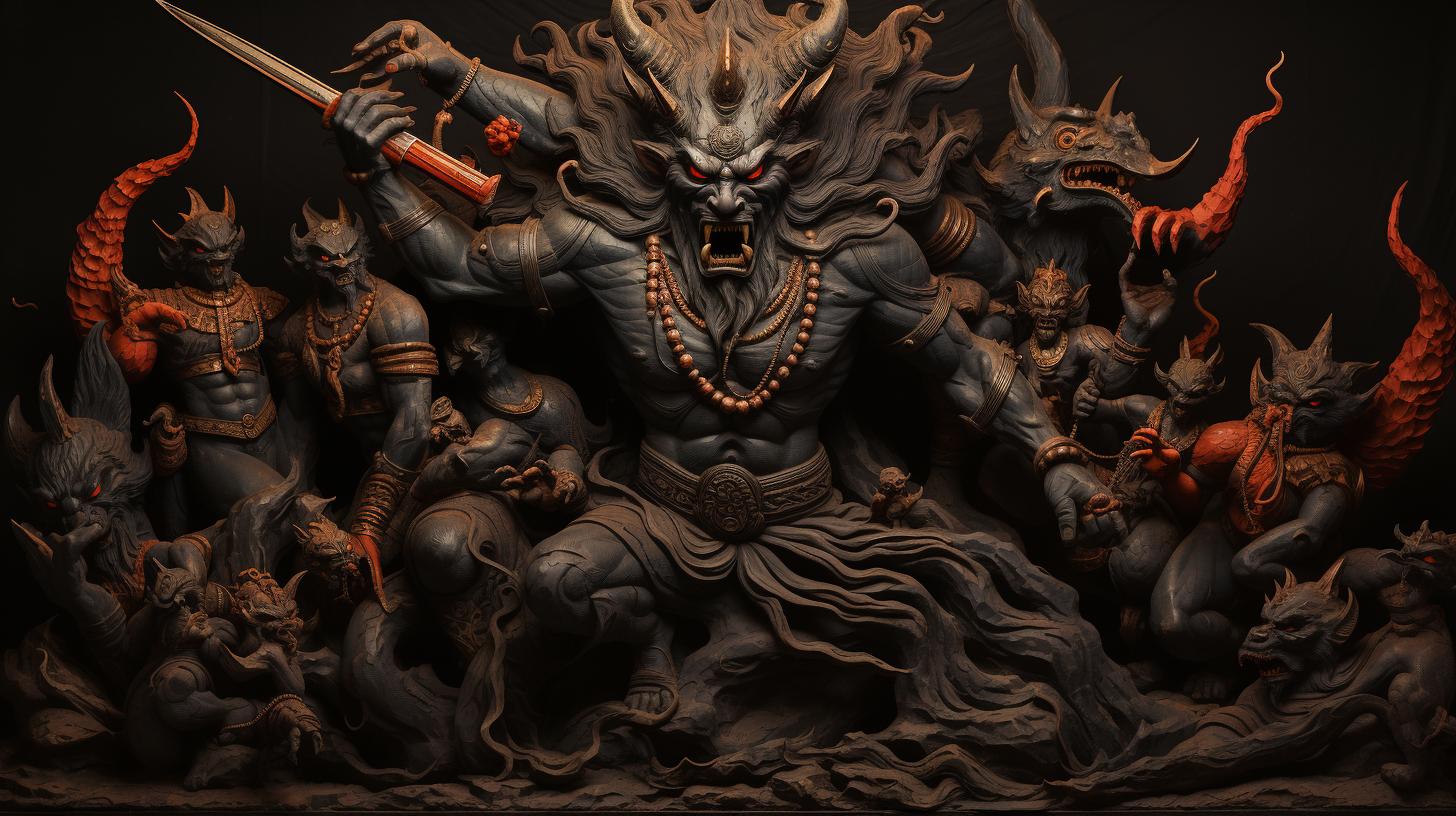Ahalya Story in Hindi: A Captivating Mythological Tale Unveiled
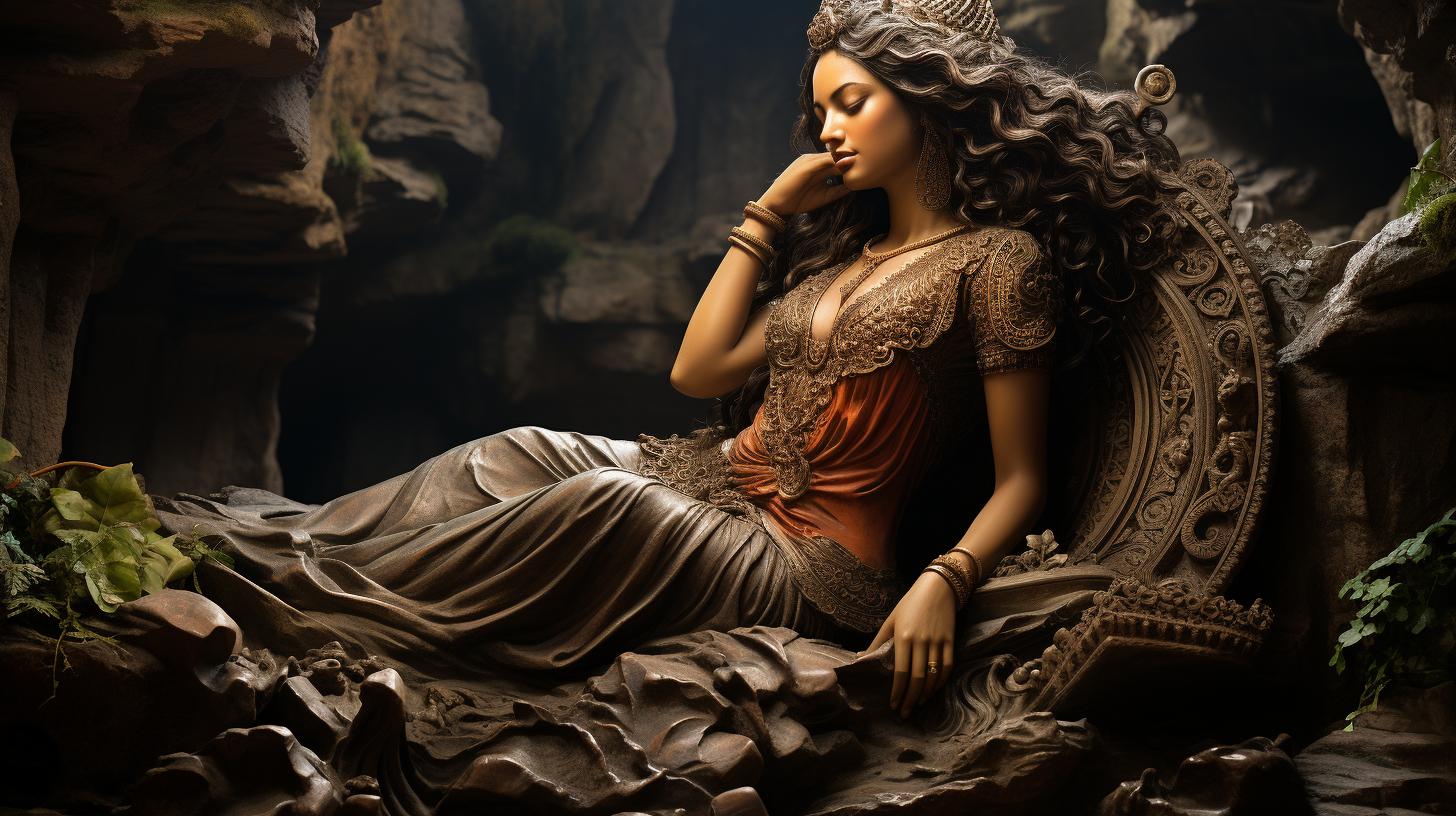
The Ahalya story in Hindi holds great significance within Hindu mythology. It revolves around Ahalya, the wife of the sage Gautama Maharishi and daughter of Brahma. Ahalya’s tale unfolds as she is seduced by Indra, the king of gods, leading to her husband’s curse.
Different versions present varying perspectives, some portraying Ahalya accepting Indra’s advances while others depict her innocence. Regardless, Rama emerges as the key to her redemption. His touch transforms her from stone to human form, symbolizing her liberation.
This captivating narrative has been retold and reinterpreted throughout time, showcasing Ahalya as an archetype of female chastity.
The Mythology of Ahalya
The mythology of Ahalya encompasses various aspects of her story, including her background and her marriage to sage Gautama Maharishi. It also delves into the significant event of her seduction by Indra, the king of gods.
Background of Ahalya
Ahalya, a prominent character in Hindu mythology, is believed to be the daughter of Brahma, the creator. She was created by Brahma as the epitome of beauty and eventually married the sage Gautama Maharishi.
Ahalya’s Marriage and Seduction by Indra
Having married Gautama, Ahalya’s life took an unexpected turn when she caught the attention of Indra, the king of gods. Indra, driven by desire, managed to seduce Ahalya, betraying her marriage vows.
This act had far-reaching consequences for Ahalya’s destiny.
This section unravels the rich mythology surrounding Ahalya and sheds light on the circumstances that led to her fateful encounter with Indra. It explores the emotional and moral implications of her seduction and sets the stage for the subsequent events in her story.
Stay tuned for the following sections, which will delve into the different versions of Ahalya’s story and the variations in her curse, redemption, and reinterpretations over time.
Different Versions of Ahalya’s Story
The story of Ahalya has been retold in various versions over time, presenting different perspectives on her encounter with Indra. These versions shed light on Ahalya’s acceptance and discovery of Indra’s deception, as well as her innocence and Indra’s trickery.
Let’s explore these two dimensions of the story.
Ahalya’s Acceptance and Discovery of Indra’s Deception
In some versions of Ahalya’s story, she accepts the advances of Indra, albeit unknowingly, and later discovers the truth. Ahalya, known for her exceptional beauty, becomes enchanted by Indra’s charms.
Ahalya’s Innocence and Indra’s Trickery
In other renditions of the story, Ahalya is depicted as innocent and being deceived by Indra. Indra cunningly assumes the form of Gautama, Ahalya’s husband, to seduce her. Ahalya, acting out of trust and love for her apparent husband, falls victim to Indra’s trickery.
This version highlights Ahalya’s innocence and the betrayal she faces, portraying her as a victim of circumstance rather than an active participant in her own downfall.
These different versions of Ahalya’s story add depth and complexity to her character, raising questions about perception, choices, and the consequences of actions.
They demonstrate the rich tapestry of interpretations surrounding this captivating mythological tale.
Ahalya’s Curse and Redemption
The story of Ahalya in Hindi mythology takes a dramatic turn with the curse inflicted upon her and her eventual redemption. Various versions depict different variations of Ahalya’s curse and the role of Rama in liberating and redeeming her.
Variations of Ahalya’s Curse
In different renditions of the Ahalya story, the nature of her curse varies. Some versions describe her being transformed into an invisible entity, living in seclusion and penitence, while others depict her remaining invisible to the world but still existing in human form.
These variations emphasize the consequences of her transgressions and the need for her to face the consequences of her actions.
Rama as the Agent of Liberation and Redemption
Rama, the central protagonist of the Ramayana epic, plays a pivotal role in Ahalya’s liberation and redemption. By coming into contact with Ahalya, Rama facilitates her transformation from her cursed state to her original human form.
This interaction highlights Rama’s divine power and his ability to liberate individuals from their afflictions and sins.
Ahalya’s Penitence and Invisible Existence
As a result of her curse, Ahalya is often depicted engaging in long periods of penitence and leading an invisible existence. This penitence becomes an integral part of her journey towards redemption.
Ahalya’s Transformation from Stone to Human Form
In certain versions of the story, Ahalya is transformed into a stone by her husband’s curse. However, her redemption comes when Rama, with his divine touch, restores her humanity. This transformation symbolizes the power of divine intervention and the potential for individuals to be liberated from the sins and curses that envelop them.
Throughout Ahalya’s curse and redemption, her story serves as a moral lesson, demonstrating the consequences of giving in to temptation and the possibility of redemption through penitence and divine intervention.
Reinterpretations of Ahalya’s Story
In addition to the various versions of Ahalya’s story in Hindu mythology, there have been notable reinterpretations that highlight different aspects of her character and role.
These reinterpretations shed light on Ahalya’s significance in ancient texts as well as her portrayal in contemporary versions, emphasizing her role as an archetype of female chastity.
Ahalya’s Role in Ancient Texts versus Contemporary Versions
In ancient texts, such as the Ramayana, Ahalya’s story is primarily centered around the actions and influence of Rama. However, in contemporary versions, there is a shift towards exploring Ahalya’s perspective and character in greater depth.
This renewed focus allows for a deeper understanding of Ahalya’s struggles, choices, and individual agency.
Contemporary reinterpretations bring out Ahalya’s agency by highlighting her emotional journey, her dilemmas, and her responses to the situations she encounters.
These versions aim to provide a more nuanced portrayal of Ahalya and her experiences, moving away from a simplistic narrative where she is solely a passive victim.
Ahalya as an archetype of Female Chastity
Ahalya’s story has been cherished in traditional Hinduism as a tale that symbolizes the concept of female chastity.
She is hailed as one of the “five maidens,” representing exemplary purity and fidelity. Her name itself, Ahalya, is believed to represent impeccable beauty, and her actions are often interpreted as a demonstration of virtuous conduct and devotion to her husband.
However, alternate interpretations suggest that Ahalya’s story goes beyond the conventional notion of chastity. Some authors interpret her name as a symbol of previously infertile land becoming fertile through the touch of Rama’s foot.
This perspective delves into the themes of transformation, redemption, and personal growth, expanding the understanding of Ahalya’s journey beyond the confines of traditional archetypes.
- Various reinterpretations highlight the complexity of Ahalya’s character, exploring her choices, motivations, and personal growth.
- Ahalya’s story provides insights into the challenges faced by women and the societal expectations placed upon them.
- Contemporary versions aim to give Ahalya a voice and agency, painting her as a multidimensional character rather than a passive figure.
- Ahalya’s tale serves as a reflection of broader themes such as morality, personal transformation, and the power of redemption.
.
.












